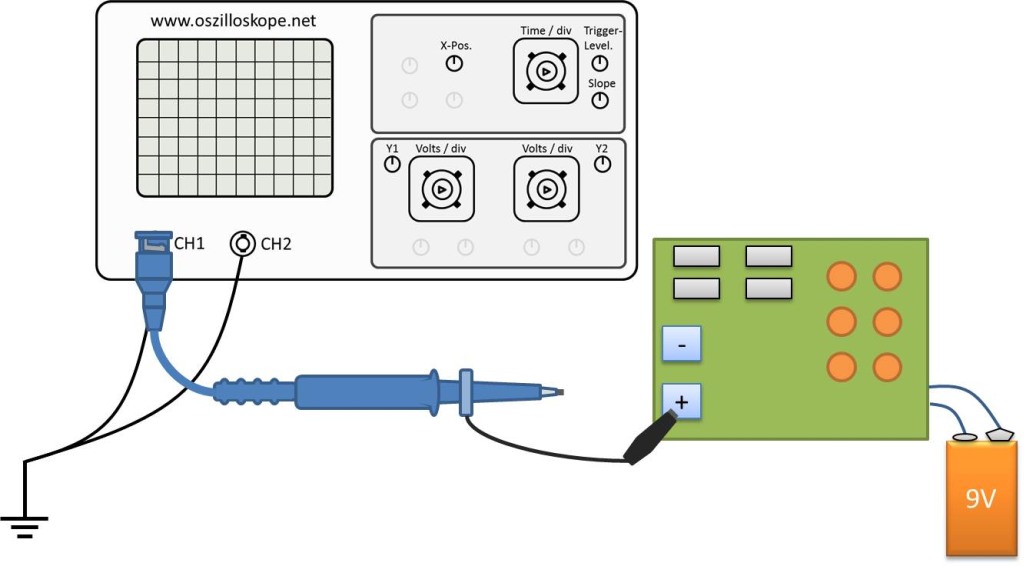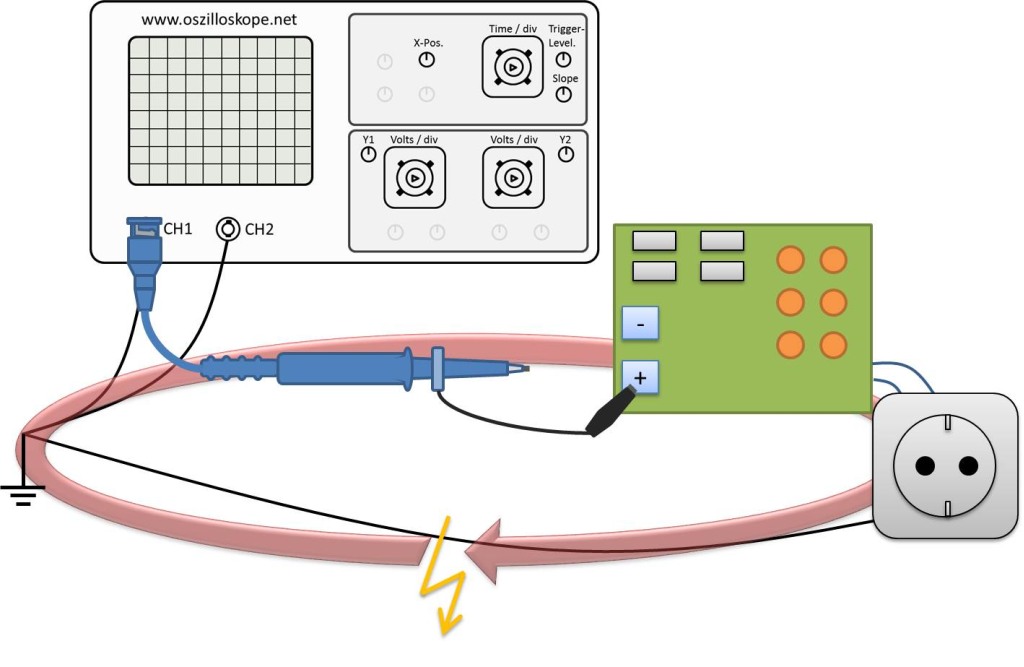Why is the ground connection of an oscilloscope problematic? The reason is that the oscilloscope ground is connected via the device connector with the ground potential of the outlet. This can cause problems depending on how the circuit under investigation is powered.
Ground for battery operated circuit
If one examines a circuit that is powered by a battery, no problems are expected as long as no further connections are made (like USB or other connecting cables having a ground potential). However, the ground connection of the probe is connected to the oscilloscope via the BNC connector. Internally, the housing of the oscilloscope is coupled to the earth potential of the socket-outlet. So you put the earth potential to the circuit to be measured. For battery operation this is no problem, there is no short circuit. One can connect the ground connection of the probe anywhere and connect it with the test probe.
Ground for mains-operated circuit
The situation is different with mains operation of the circuit. In this case it depends on the power supply unit. In the case of a galvanic separation, the situation is analogous to battery operation. If the power supply has no galvanic isolation, one might generate a short circuit that can destroy the circuit and oscilloscope! Without galvanic isolation, the circuit has a ground potential. If you now touch a pin with the ground connection of the probe, which is is not at ground potential (e.g. the supply voltage), a short circuit is generated. (see figure above). The positive voltage is connected via the ground connection of the probe and the housing of the BNC connector with the earth potential. Since the circuit is connected to the same ground you have a low-impedance circuit between plus and minus. Depending on how much current the power supply unit delivers, a very high short-circuit current can flow and might destruct the device or lead to burns and injuries. This is a very dangerous matter. These kinds of accidents happen accendentially, e.g. in case one drops the probe and the ground connection hits a voltage-carrying part of the circuit. Immediately you have a short circuit with large destructive potential.
USB Connections
Another danger are USB connections of the circuit with a PC. The USB cable leads the ground potential via the computer to the circuit. The same hazard potential arises as in the above case. If possible, one should use a laptop in battery operation or use special USB connectors with galvanic isolation.
There are several ways to minimize the risk potential. If possible, the circuit should always be powered by batteries and make sure that no further cable is connected to ground. Another possibility is the use of two probes and measureme the differential voltage of channel1 minus channel2. However the risk that the probe mass can inadvertently hit a voltage-guided part remains. As third alternative there are differential probes, which decouple the ground potential of the oscilloscope and allow safe operation.
More information on oscilloscope grounding can be found in the EEVBlog and on YouTube. David Jones reports about short circuits via oscilloscope grounding.

